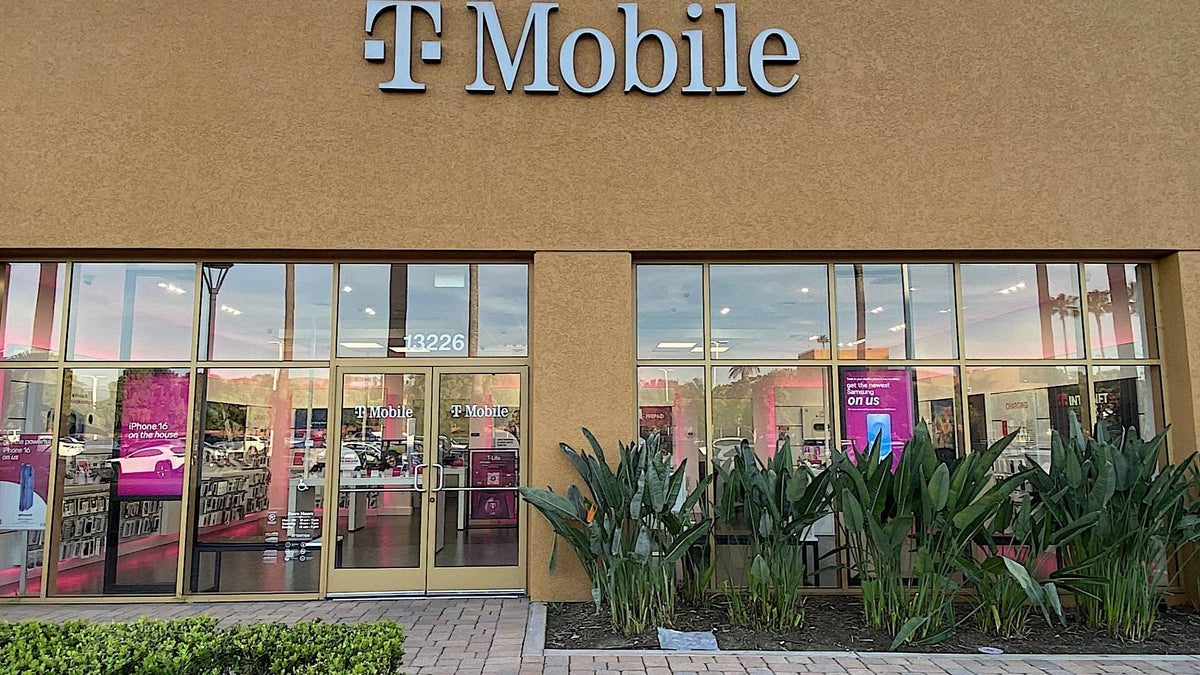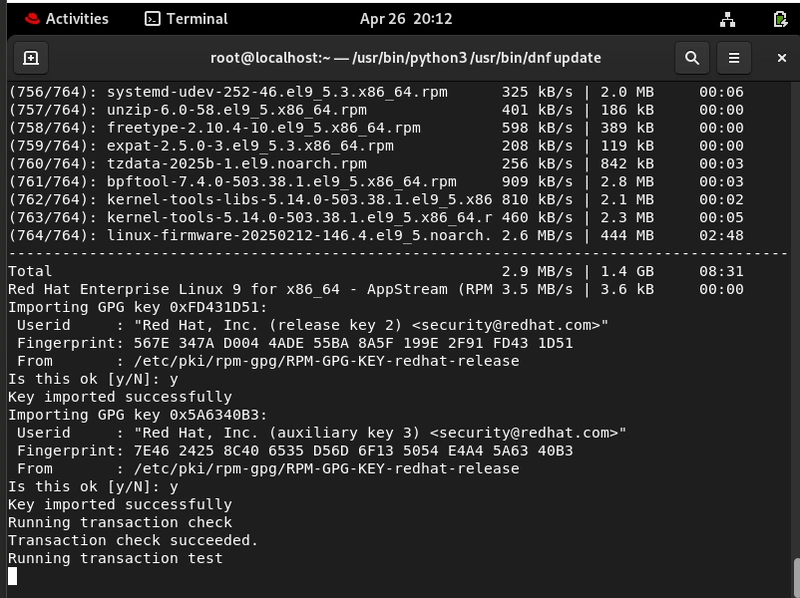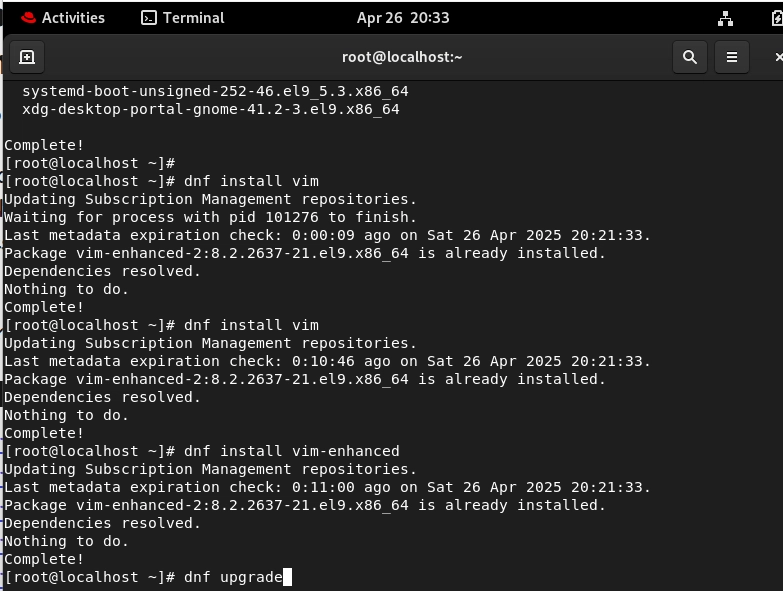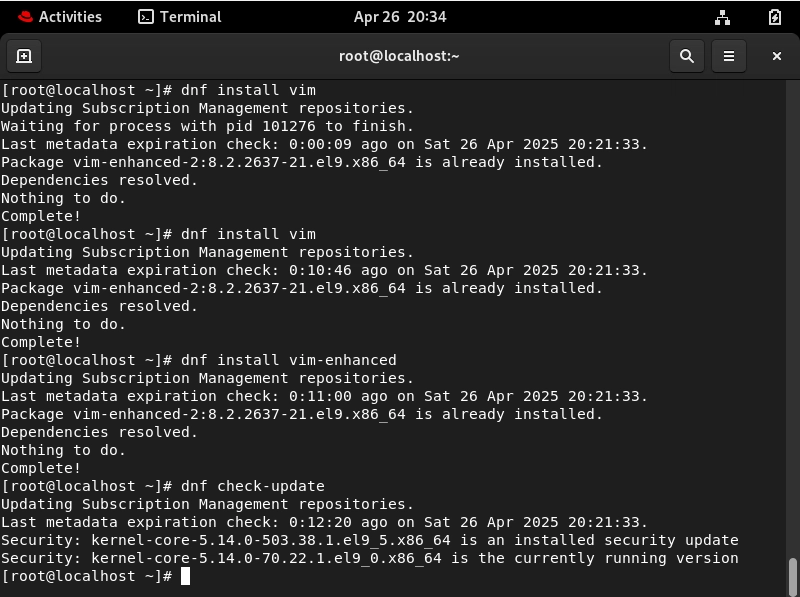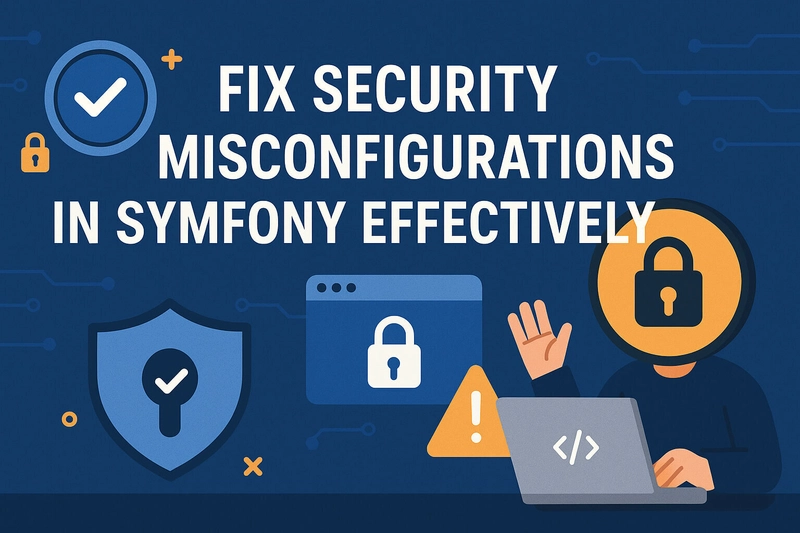How to Register Your RHEL 9 System (The Simple Way)...
If you're running RHEL 9 on VirtualBox (or anywhere else), one of the first things you'll want to do is register your system with Red Hat. Registering gives you access to official repositories, security patches, updates, and all the good stuff that keeps your system stable and secure. Let me show you a quick and simple guide to get it done. Index Step 1: Register Your System Step 2: Refresh Your Subscription Step 3: Verify Your Registration Step 4: Attach an Available Subscription Step 5: Update and Install Essential Packages Summary Step 1: Register Your System subscription-manager register --username --password Replace and with your Red Hat account credentials. (If you don't have an account yet, you can create one for free at Red Hat. Once it is successfully registered, you should get this prompt. Step 2: Refresh Your Subscription After successfully registering, refresh the subscription manager: subscription-manager refresh Step 3: Verify Your Registration You can check if your system is properly registered by running: subscription-manager identity or subscription-manager status This will confirm that your system is recognized by Red Hat. Step 4: Attach an Available Subscription To automatically attach a subscription (instead of manually choosing one): subscription-manager attach --auto Step 5: Update and Install Essential Packages Now that you're registered and ready to roll, it's a good idea to update your system and install some basics: # Update package information dnf update # Install Vim and enhanced version dnf install vim dnf install vim-enhanced # Perform system upgrade dnf upgrade # Check for available updates dnf check-update This ensures your system has the latest updates and access to Red Hat's official repositories. Here are some snapshots of the update process... Summary Now your RHEL 9 system is fully registered, updated, and ready for action. Whether you're setting up a new project, learning Linux, or preparing for certifications, having a properly registered system is key to a smooth experience. Happy learning and building! If you need extra assistance, you could reach me on LinkedIn If you're using a developer subscription, remember that RHEL systems need to check in at least once every 30 days to maintain their registration status. #30DaysLinuxChallenge #CloudWhistler #RedHat #Cloudsecurity #DevOps #Linux #OpenSource #CloudComputing #Womenwhobuild #RedHatEnterpriseLinux #Systemregistration #EnterpriseIT #Ansible #OpenShift #SysAdmin #Automation #CloudEngineer

If you're running RHEL 9 on VirtualBox (or anywhere else), one of the first things you'll want to do is register your system with Red Hat. Registering gives you access to official repositories, security patches, updates, and all the good stuff that keeps your system stable and secure.
Let me show you a quick and simple guide to get it done.
Index
- Step 1: Register Your System
- Step 2: Refresh Your Subscription
- Step 3: Verify Your Registration
- Step 4: Attach an Available Subscription
- Step 5: Update and Install Essential Packages
- Summary
Step 1: Register Your System
subscription-manager register --username --password
Replace
Once it is successfully registered, you should get this prompt.
Step 2: Refresh Your Subscription
After successfully registering, refresh the subscription manager:
subscription-manager refresh
Step 3: Verify Your Registration
You can check if your system is properly registered by running:
subscription-manager identity
or
subscription-manager status
This will confirm that your system is recognized by Red Hat.
Step 4: Attach an Available Subscription
To automatically attach a subscription (instead of manually choosing one):
subscription-manager attach --auto
Step 5: Update and Install Essential Packages
Now that you're registered and ready to roll, it's a good idea to update your system and install some basics:
# Update package information
dnf update
# Install Vim and enhanced version
dnf install vim
dnf install vim-enhanced
# Perform system upgrade
dnf upgrade
# Check for available updates
dnf check-update
This ensures your system has the latest updates and access to Red Hat's official repositories.
Here are some snapshots of the update process...
Summary
Now your RHEL 9 system is fully registered, updated, and ready for action. Whether you're setting up a new project, learning Linux, or preparing for certifications, having a properly registered system is key to a smooth experience.
Happy learning and building!
If you need extra assistance, you could reach me on LinkedIn
If you're using a developer subscription, remember that RHEL systems need to check in at least once every 30 days to maintain their registration status.
#30DaysLinuxChallenge #CloudWhistler #RedHat #Cloudsecurity #DevOps #Linux #OpenSource #CloudComputing #Womenwhobuild #RedHatEnterpriseLinux #Systemregistration #EnterpriseIT #Ansible #OpenShift #SysAdmin #Automation #CloudEngineer
































































































































































![[The AI Show Episode 143]: ChatGPT Revenue Surge, New AGI Timelines, Amazon’s AI Agent, Claude for Education, Model Context Protocol & LLMs Pass the Turing Test](https://www.marketingaiinstitute.com/hubfs/ep%20143%20cover.png)



























































































































![[DEALS] Koofr Cloud Storage: Lifetime Subscription (1TB) (80% off) & Other Deals Up To 98% Off – Offers End Soon!](https://www.javacodegeeks.com/wp-content/uploads/2012/12/jcg-logo.jpg)
























![Is this too much for a modular monolith system? [closed]](https://i.sstatic.net/pYL1nsfg.png)




















































































































_roibu_Alamy.jpg?width=1280&auto=webp&quality=80&disable=upscale#)




 CISO’s Core Focus.webp?#)

































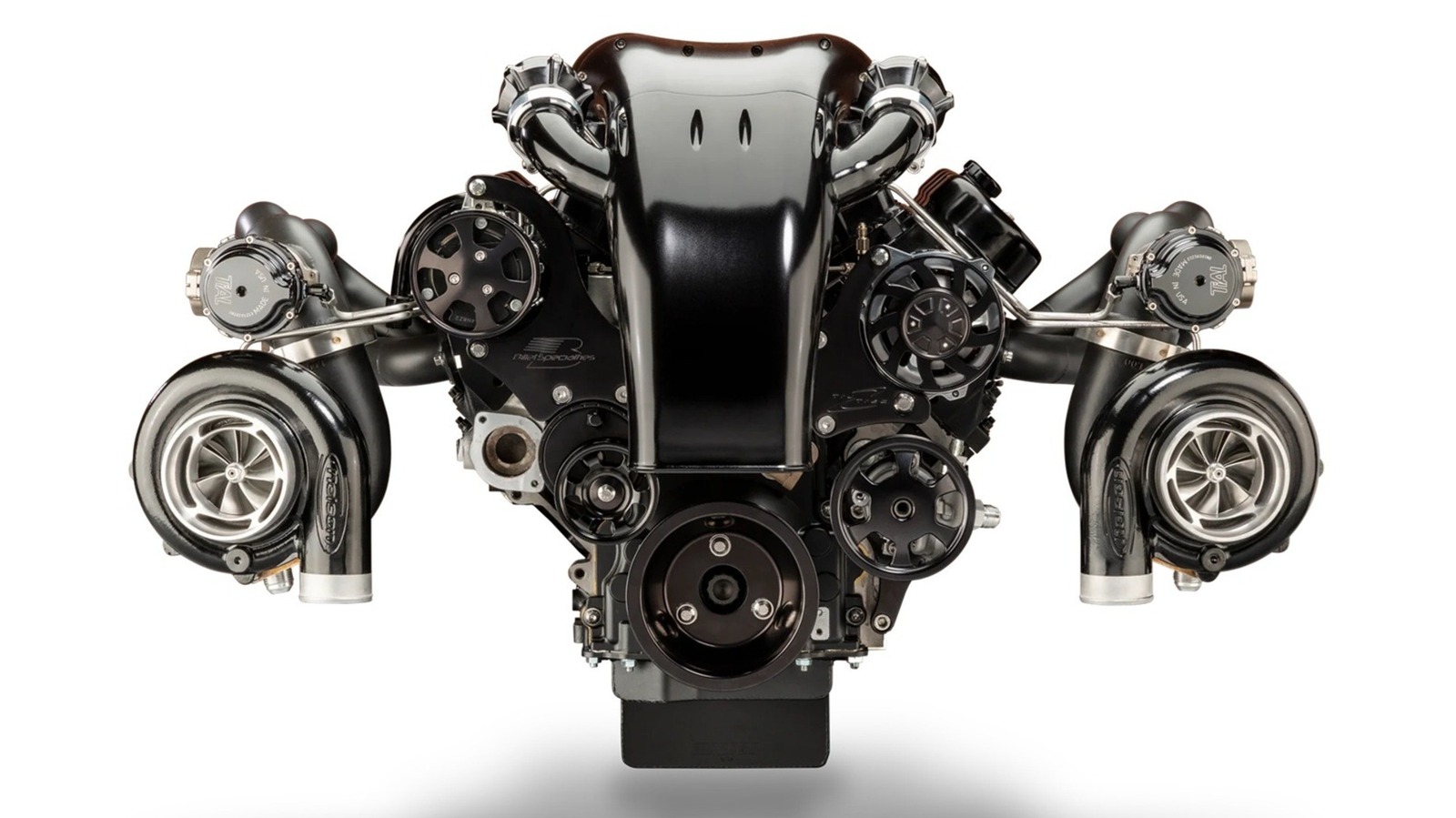
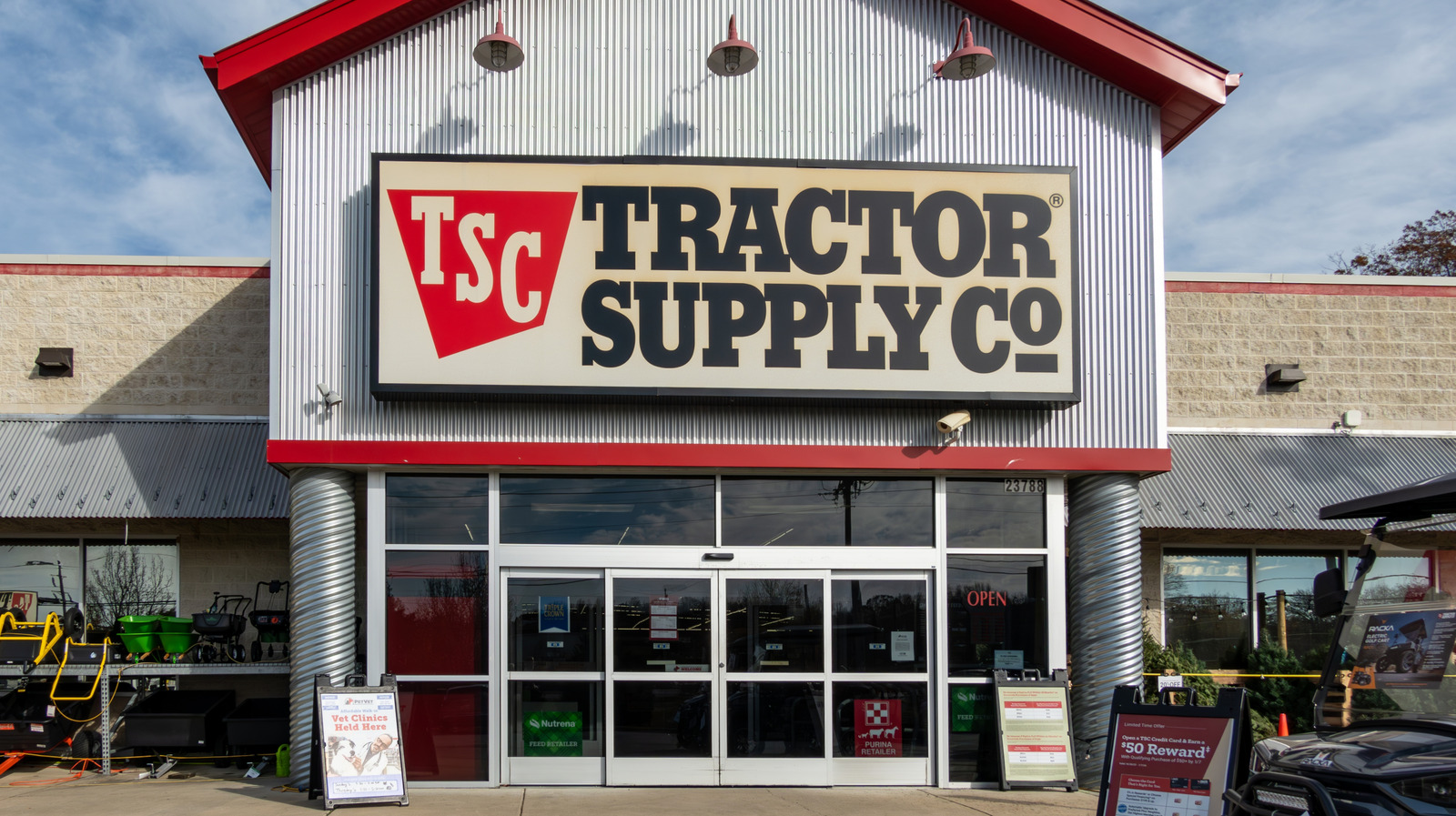



































































![M4 MacBook Air Drops to Just $849 - Act Fast! [Lowest Price Ever]](https://www.iclarified.com/images/news/97140/97140/97140-640.jpg)
![Apple Smart Glasses Not Close to Being Ready as Meta Targets 2025 [Gurman]](https://www.iclarified.com/images/news/97139/97139/97139-640.jpg)
![iPadOS 19 May Introduce Menu Bar, iOS 19 to Support External Displays [Rumor]](https://www.iclarified.com/images/news/97137/97137/97137-640.jpg)


















































